Birds Without Borders: Continental bird conservation
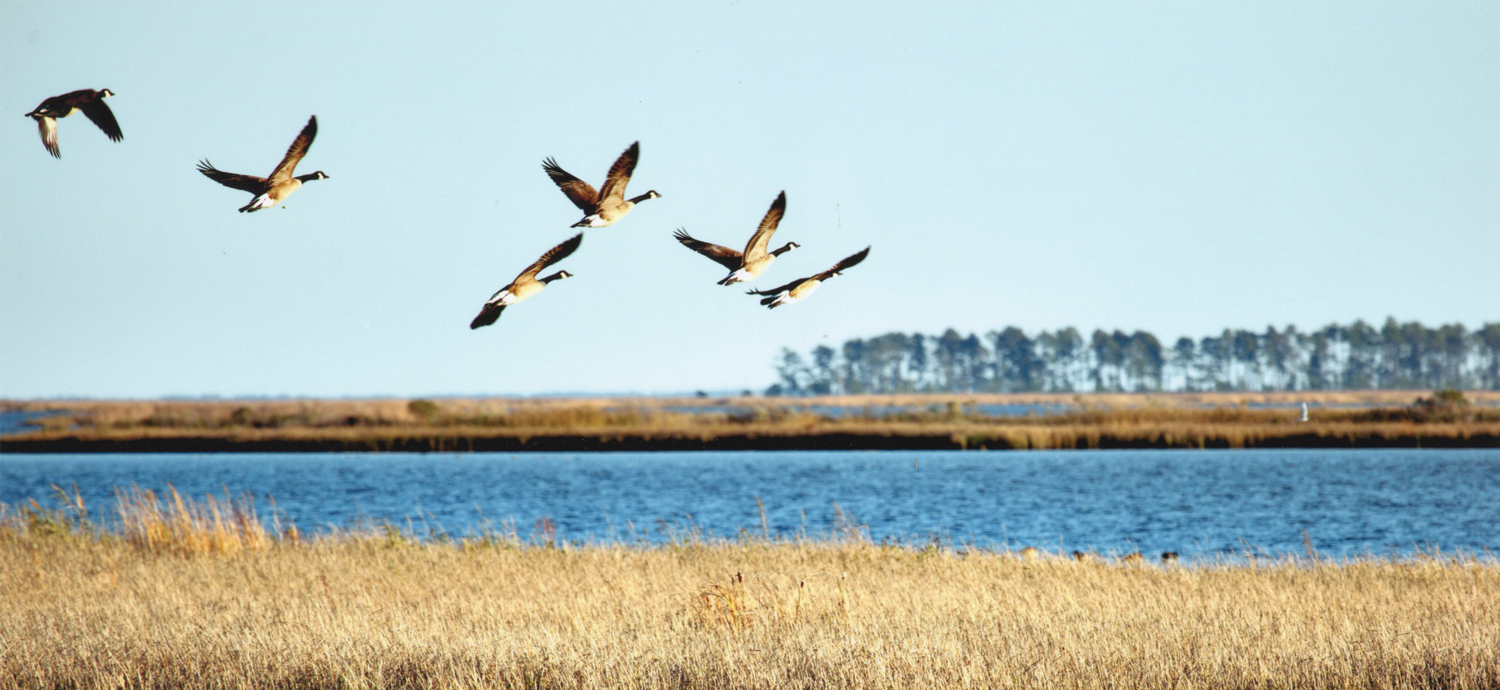
Canada Geese; by Chuck Prahl
One hundred years ago, North America united for birds.
This August marks the 100th anniversary of the first Migratory Bird Treaty. This groundbreaking international agreement between the United States and Canada was our country’s first international commitment to protect natural resources across political boundaries. This milestone set the stage for continent-wide cooperative protection of migratory birds.
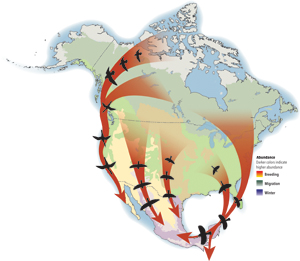
Darker colors indicate higher abundance. Red shows breeding areas; green shows migration; purple shows winter
Continental unity, then and now
Twenty years later in 1936 in the aftermath of revolution, Mexican president Lázaro Cárdenas committed his country to a treaty with the U.S. protecting birds and other wildlife, connecting all of North America in its protection efforts. Even during times of tremendous economic and political instability, our three nations recognized the importance of migratory bird conservation and united to protect our shared species.
In this centennial year, celebrating our earliest efforts towards international migratory bird protection, we are uniting once again with a State of North America’s Birds report—a groundbreaking collaboration to evaluate bird populations in 9 key ecosystems across the continent. Developed by the U.S. North American Bird Conservation Initiative and built using data collected by tens of thousands of citizen scientists, this report is a call to action to governments, private industry and the public to come together to support a beloved resource: our migratory birds.
This unprecedented, continent-wide analysis demonstrates the power of people to understanding conservation needs—and to make conservation happen.
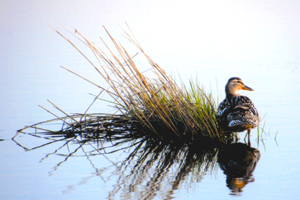
Hen mallard; by Kim Cover
Keeping close watch
Of the 1,154 types of birds that occur in North America, one third are on the report’s Watch List, which identifies high-risk species. In particular, the birds that depend on oceans and tropical forests are most imperiled due to habitat threats, restricted ranges and declining populations. More than half of our seabirds are listed. They are threatened by pollution, over-fishing, energy extraction, climate change and invasive species on islands that depredate nests.
More than 50 boreal breeding bird species—those coming from the southern Arctic region—migrate to and through Mexico’s tropical forests for winter. But while 80 percent of the boreal forest in Canada and the northern United States is still intact, tropical forests in Mexico suffer from dramatic deforestation, resulting in more than 70 percent habitat loss since the 1970s and landing more than half of Mexican tropical forest resident bird species on the Watch List.
Birds connect our continent, meaning that deforestation in Mexico threatens species across North America. Several species of concern, such as wood thrush and Louisiana water thrush, breed in Maryland’s forests but winter in Central America.
Grassland birds are facing some of the steepest population declines of any group, landing many such species on the Watch List. The vast majority of our continent’s pre-settlement prairie has been converted to agricultural and residential areas. As a result, grassland birds cling to fragmented remnants of their original habitats.
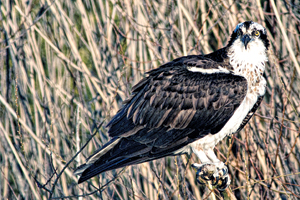
Osprey; by Don Korrell
In Maryland, grassland birds take advantage of surrogate habitats created on reclaimed strip mines, as well as habitats created specifically for them through voluntary private landowner participation in the Conservation Reserve Enhancement Program. Through this federal-state partnership, participants receive land rental income in exchange for taking environmentally sensitive cropland out of production for 10 to 15 years. During that time period, they instead create wildlife habitat, establish wetlands, protect highly erodible lands or plant streamside buffers.
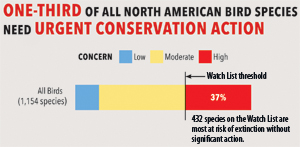 Conservation efforts
Conservation efforts
In spite of such alarming trends, we know that when people push for positive change, bird conservation succeeds. One hundred years ago, passionate wildlife supporters encouraged national leaders to invest in bird conservation by signing the Migratory Bird Treaty and putting an end to market hunting.
Investments in wetlands have paid off too. The 1934 Duck Stamp Act reflected commitments by hunters to protect waterfowl habitat—a key accomplishment that has created a strong positive outlook for ducks, herons, egrets and many others.
In the 1980s, the passage of the North American Wetlands Conservation Act secured funding to conserve wetland and upland habitat continent-wide. Over the past two decades, it has provided $1.4 billion in grants that acted as a catalyst for generating $2.9 billion in partner funds for projects on 30 million acres of habitat in all three countries. In Maryland, this funding protected and enhanced more than 87,000 acres. Just as waterfowl migrate between Canada and Mexico and back again, conservation must be guided by the birds rather than borders.
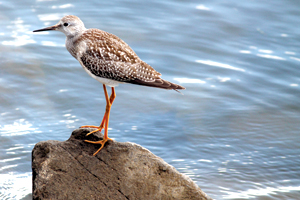
Lesser yellowlegs; by Bonnie Cole
Call to action
As we celebrate the 100th anniversary of first Migratory Bird Treaty, birds once again need our help. Fortunately, there are many ways to support strong populations.
Businesses can emerge as sustainability leaders, making healthy lands and waters part of their long-term growth strategies. Federal, state and local governments can guide policy, supporting strong conservation practices. Even our individual actions can have far-reaching positive impacts.
Simple acts like choosing sustainably created products, preventing bird collisions with windows on our houses and office buildings, and contributing bird sighting data to international databases like eBird can add up to a powerful continental force for bird conservation.
Over the past one hundred years we have made great strides in tri-national bird conservation. But birds and their habitats are still threatened. It’s time to recommit ourselves to this effort so we can look ahead to a bright future for birds in the next hundred years.
Article by Judith Scarl, Ph.D—U.S. Coordinator of the North American Bird Conservation Initiative and Association of Fish and Wildlife Agencies Bird Conservation program manager. Gwen Brewer, Ph.D—Wildlife and Heritage science program manager—contributed to this article.
Appears in Vol. 19, No. 3 of the Maryland Natural Resource magazine, summer 2016.


 1-888-373-7888
1-888-373-7888 233733
233733